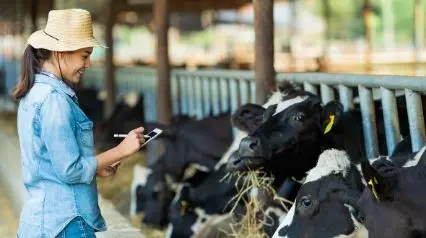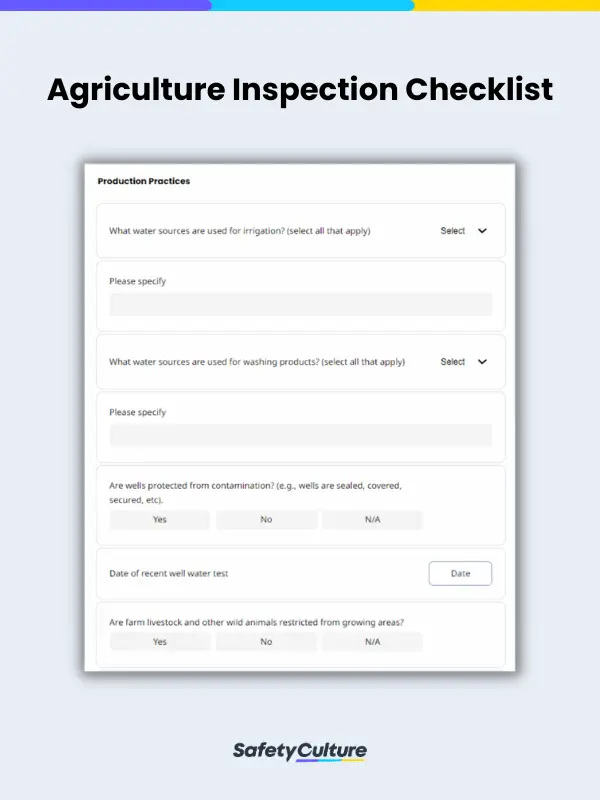What is Agriculture Inspection?
Agriculture inspection assesses all operations involved in food production agriculture, such as farming, logging, and fishing to ensure compliance with laws and quality standards. Agriculture inspections are closely related to food safety which also protects public health from any foodborne illnesses. The inspection includes identifying and monitoring the presence of harmful diseases, chemical residues, and infestations in produce and livestock and controlling them. Failure to comply with laws and regulations governing health, quality, and safety of agricultural products can result in legal ramifications such as costly fines, plant shutdown, and other legal and regulatory problems that can harm the business.
3 Crucial Agricultural Processes
Agriculture inspections are performed in various ways; in some cases, inspectors perform this inspection in agriculture inspection stations where trucks and cargo carrying agricultural products are examined on the road before crossing a certain area to protect the agricultural industry from threats such as pests. Most commonly they are performed on farms, ports, and food or meat processing plants. Agricultural inspectors monitor different processes and areas, including:
- Meat production
Many types of bacteria can grow on animal products, and if not careful can cause adverse health effects. Food safety regulations require all facilities involved in meat processing should practice safe handling, storage, and preparation of meat products before sending them out to the market. Cattle farms or meat processing plants that conduct slaughtering, should regulate hygienic practices and proper waste management to reduce the risks of foodborne illnesses and diseases. - Chemical hazards
Production of agricultural products involves the usage of various chemical substances such as pesticides and herbicides. Many workers are exposed to these chemicals on a daily basis and without precautions and safety systems in place, it can cost someone their life or even fall ill. Having safety systems in place and proper training in handling chemical substances protects not only your workers but also the consumers. - Facilities and equipment
According to the Centers for Disease Control and Prevention (CDC), the agriculture industry ranks as one of the most hazardous industries. Farmers and workers are at risk for fatal and nonfatal injuries. Among these injuries are caused by conditions of the workplace, equipment failure, and other hazards specific to agriculture. Inspectors should assess tools, equipment and machinery conditions, and facilities safety from hazards (e.g., slip, trip, falls, etc.)
Achieving Compliance Through Agriculture Inspections
Complying with laws and regulations that involve agriculture products such as FSMA (Food Safety Monitoring Act) can be quite overwhelming at first, but with proper training and preparations, sustaining compliance can be manageable. Agriculture inspections are designed to prepare farms and food processing plants to align current procedures to best practices and standards, allowing the organization to move beyond compliance.
Below are 3 things agriculture inspectors can do to get the most out of agriculture inspections:
-
- Develop a process for performing your inspections
Inspections are more efficient when there is a standard process to follow. Basing from a Communication and Professional Practice course from Carson Dunlop, an effective inspection process should be able to do the following:- Examine every system
- Reduces time spent onsite
- Adheres to standards of practice
- Improves professionalism and efficiency, and
- Evaluates processes for potential areas of improvement
- Create and apply templates
Templates are a fantastic solution for producing consistent reports. Using templates can help inspectors take out the guesswork in performing, and help them focus on gathering the right data needed to move the business further. - Mobilize inspection
The traditional method of pen and paper in doing inspections is not only prone to human errors, but it is also time consuming and labor intensive. Therefore, issues take a long time before it is rectified. Leaders in the agriculture industry are now embracing today’s technology to better manage and streamline inspections, leveraging their teams with a mobile inspection software to raise safety and quality issues.
- Develop a process for performing your inspections



